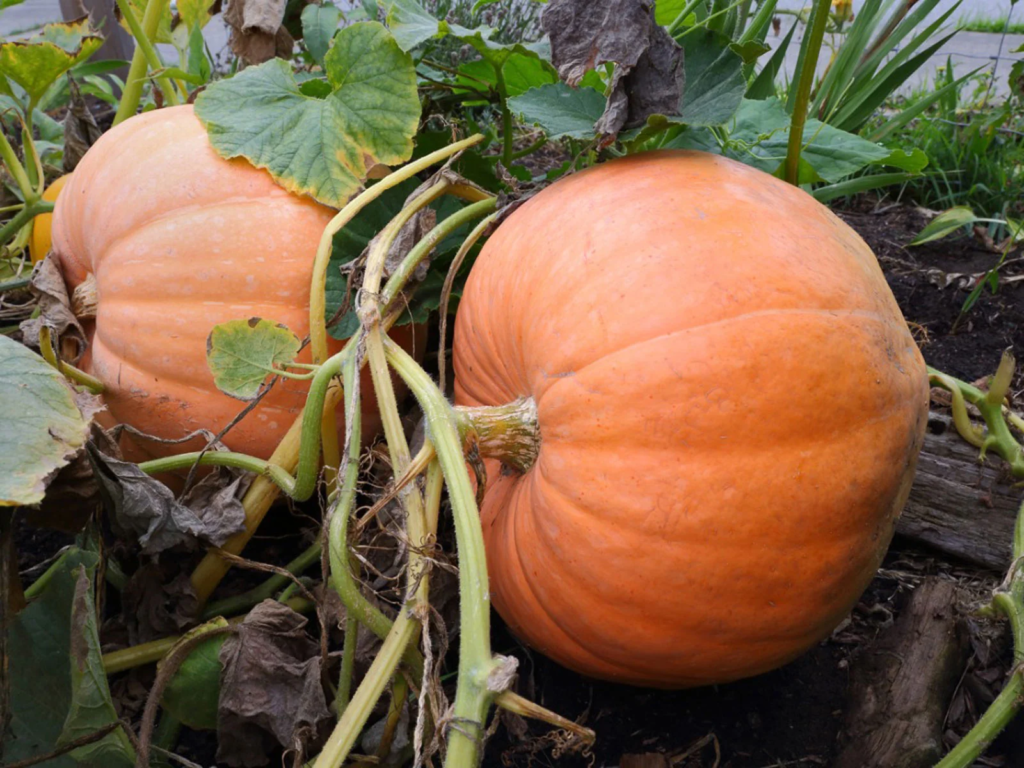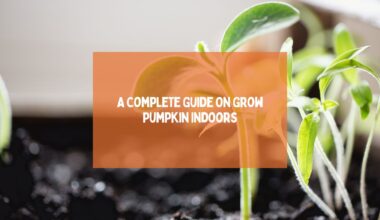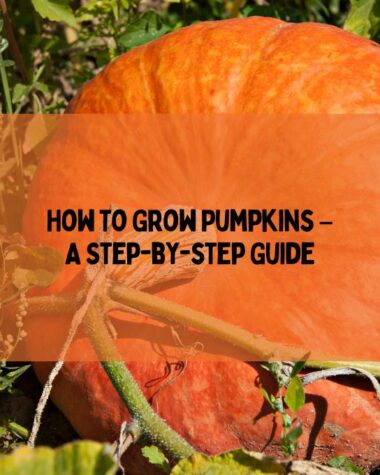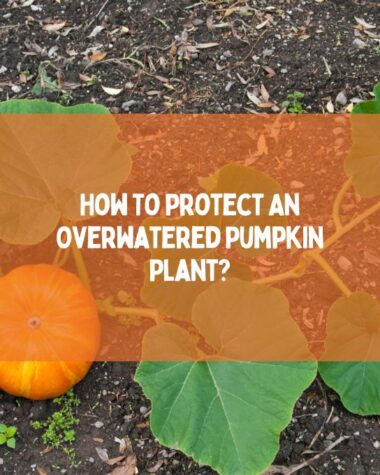To grow pumpkins in raised beds, select a sunny location for your raised bed. The bed is at least 18 inches deep to allow for adequate root growth. Fill the bed with nutrient-rich soil and plant pumpkin seeds directly in the soil, about 1-2 inches deep and 3–4 feet apart. Water regularly and ensure the soil stays moist.
As the pumpkins grow, provide support for the vines to prevent them from breaking. With proper care, you can enjoy a plentiful pumpkin harvest from your raised bed.
In this article, I will discuss the steps to growing pumpkins in raised beds.
Let’s start.
8 Steps To Grow Pumpkins In Raised Beds

Growing pumpkins in raised beds can be a great way to maximize space and produce a bountiful harvest.
The steps are described below;
1. The Ideal Size and Shape for a Pumpkin-Friendly Raised Bed
When selecting a raised bed for your pumpkin patch, consider the size of the bed. It should be deep enough to allow for proper root growth and should provide space for the pumpkin vines to spread out.
Look for raised beds made of durable materials, such as cedar or metal. Make sure that the raised bed has adequate drainage to prevent waterlogged soil, which can lead to root rot.
2. Understanding Soil pH and Nutrient Levels for Successful Pumpkin Growth
For preparing the soil in a raised bed, start by removing any weeds or debris from the bed. Add a layer of organic matter, such as compost or well-rotted manure. This will help improve the soil’s fertility and structure.
Mix the organic matter into the soil to a depth of at least 12 inches, breaking up any clumps or compacted areas. Test the soil’s pH level and adjust if necessary to ensure optimal growing conditions for your pumpkins.
3. Seed Selection for Bountiful Raised Bed Pumpkin Harvest
Planting pumpkin seeds in a raised bed is a simple process. Start by creating a small amount of soil in the raised bed, spacing it 3–4 feet apart. These spots will serve as planting spots for your pumpkin seeds.
Dig a hole in each mound, about 1-2 inches deep, and place one or two pumpkin seeds in each hole. Cover the seeds with soil and water them. As the seeds germinate and grow, thin out the weaker seedlings, leaving only the strongest ones to ensure healthy and robust plants.
Related Reading
- How to Harvest Pumpkin Seeds for Planting?
- How To Start A Pumpkin Patches?
- How To Grow Red Pumpkins?
- The Ultimate Guide to Growing Pumpkins in Grow Bags: Tips, Techniques, and Best Practices
4. Watering Frequency and Amounts for Raised Bed Pumpkin Gardens
Watering pumpkin plants regularly is crucial to ensuring healthy growth. It’s important to water them deeply and regularly, especially during hot and dry weather. Aim to keep the soil evenly moist but not waterlogged.
Overwatering can lead to root rot, while underwatering can cause stress to the plants and lead to stunted growth and reduced yields. To prevent the leaves from getting wet and potentially developing fungal diseases, water the base of the plant rather than spraying the entire plant.
5. Preventing Nutrient Imbalances and Deficiencies in Your Raised Bed Pumpkin Patch
Using fertilizers can be an effective way to boost the growth and yield of your pumpkin plants in a raised bed. Organic fertilizers, such as compost, well-aged manure, or fish emulsion, are a great choice as they provide essential nutrients without the risk of chemical buildup in the soil.
Apply the fertilizer according to the instructions, but do not over-fertilize, which can lead to excessive growth and reduced fruit production.
Consider using natural pest control methods, such as companion planting or physical barriers, to avoid the use of chemical pesticides that can harm beneficial insects and pollinators.
6. Preventing Vine Breakage and Damage in a Raised Bed Environment

Providing support for your pumpkin plants in a raised bed is necessary to prevent them from sprawling and taking up too much space. Use trellises or stakes to support the vines. As the plants grow, gently tie the vines to the support, taking care not to damage the stems or leaves.
This will help to keep the plants upright and prevent the fruit from touching the ground, reducing the risk of rot or disease. Consider pruning the plants regularly, or three times a year, to remove any dead or damaged leaves or vines, which can also help promote healthy growth and fruit production.
7. Mulch Maintenance for Your Pumpkin Patch
A layer of organic mulch, such as straw, leaves, or grass clippings, can help to retain moisture in the soil, suppress weed growth, and regulate soil temperature. Apply a 2-3-inch layer of mulch around the base of the plants, taking care not to cover the stem or leaves.
Using black plastic mulch to warm the soil and promote early growth in cooler climates Regularly check the mulch and remove any weeds or debris that may accumulate.
By using mulch, you can create a healthy and productive environment for your pumpkin plants in a raised bed
8. Common Pests and Diseases to Watch for in Raised Bed Gardens
Common pests that can affect pumpkins include squash bugs, cucumber beetles, and vine borers.
Diseases like powdery mildew and downy mildew can also affect pumpkin plants, so it’s essential to maintain good air circulation, avoid overwatering, and promptly remove any infected leaves or plants.
Prevention
- To prevent these pests from infesting your plants, consider using physical barriers, such as row covers or netting.
- Natural pest control methods, such as companion planting or introducing beneficial insects like ladybugs or lacewings.
- Regularly inspect your plants for signs of pests and diseases and take action quickly to prevent them from spreading and causing damage.
Related Reading
- A Complete Growing Guide for Zucchini Plant Care
- What cucumber variety is best to eat?
- Growing Brinjal at Home: A Complete Guide
- 8 Reasons To Plant Marigolds With Your Tomatoes
Conclusion
Growing pumpkins in a raised bed can be a rewarding experience, providing you with a bountiful harvest of delicious and nutritious fruits. It is a great way to maximize your growing space and create a beautiful and productive garden.
By choosing the right raised bed, preparing the soil, planting the seeds, providing adequate water and nutrients, supporting the plants, using mulch, and preventing pests and diseases, you can create an optimal growing environment for your pumpkin plants.
Thanks for reading!







